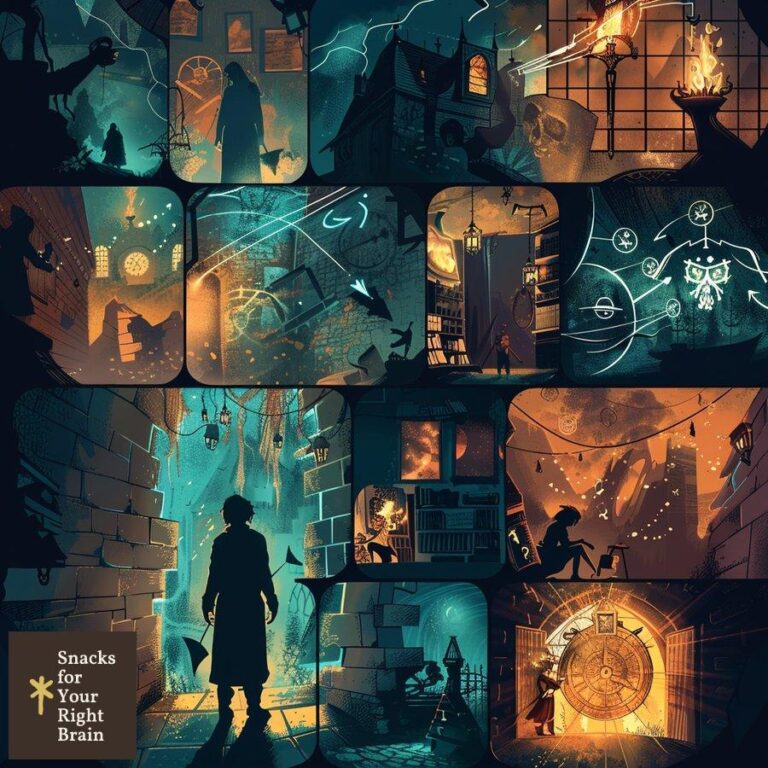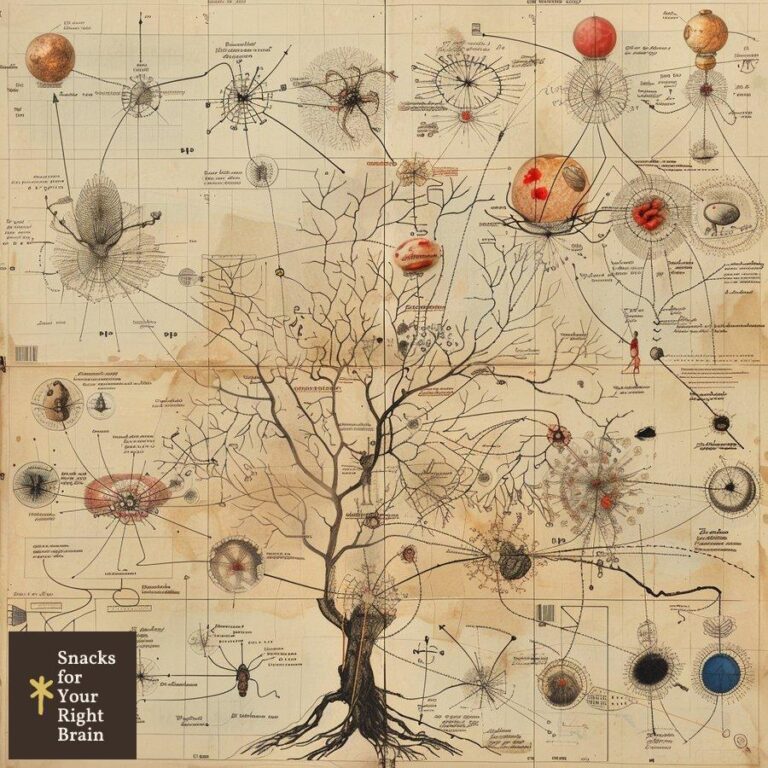What Is an Example of a Character Foil
What is a character foil?
A character foil is a literary device used to highlight the traits, behaviors, and motivations of a primary character, typically the protagonist. By juxtaposing a foil character against the protagonist, authors can illuminate specific qualities that might otherwise remain unnoticed. This contrast often serves to deepen the reader’s understanding of the main character’s personality and choices.
Definition and Purpose

The term “foil” originates from the practice of backing gemstones with shiny material to enhance their brilliance. Similarly, a character foil enhances the attributes of another character by providing a stark contrast. Foils can be found in various forms, including antagonists, best friends, mentors, or even love interests. Their primary function is to emphasize the protagonist’s characteristics, making them more pronounced and relatable to the audience.
For example, in Shakespeare’s Hamlet, the impulsive Laertes serves as a foil to the indecisive Hamlet. Laertes’ immediate response to his father’s murder highlights Hamlet’s procrastination and internal conflict, thereby enriching the narrative and character development.
How do authors use foils to enhance character development?
Authors strategically employ foil characters to create a multi-dimensional portrayal of the protagonist. The relationship between a protagonist and their foil can reveal essential traits and motivations, thus enriching the narrative.
Contrast and Comparison
Foils are often characterized by their contrasting traits, which can include:
-
Moral Values: A protagonist driven by altruism may be contrasted with a foil who embodies selfishness, highlighting the protagonist’s virtues.
-
Behavioral Traits: An impulsive protagonist may be paired with a cautious foil, emphasizing the consequences of rash decisions.
-
Goals and Aspirations: A foil may have similar experiences but pursue different objectives, illustrating alternative paths and choices.
Character Growth
The interactions between a protagonist and their foil can lead to significant character growth. For instance, a protagonist may learn from their foil’s mistakes or successes, prompting personal development. This dynamic can create tension and conflict, essential elements that drive the plot forward.
Table: Character Foil Dynamics
| Protagonist Traits | Foil Traits | Impact on Character Development |
|---|---|---|
| Altruistic | Selfish | Highlights protagonist’s virtue |
| Impulsive | Cautious | Emphasizes consequences of actions |
| Ambitious | Content | Illustrates different life choices |
What are classic examples of character foils in literature?
Literature is replete with examples of character foils that serve to enhance the narrative and deepen character exploration. Here are several notable examples:

-
Romeo and Mercutio (Shakespeare’s Romeo and Juliet): Mercutio’s cynical view of love contrasts sharply with Romeo’s romantic idealism, highlighting the depth of Romeo’s emotions and the tragedy of his fate.
-
Dr. Jekyll and Mr. Hyde (Robert Louis Stevenson): The duality of Jekyll and Hyde serves to explore the complexities of human nature, illustrating the struggle between good and evil within a single individual.
-
Harry Potter and Draco Malfoy (J.K. Rowling’s Harry Potter series): Draco’s elitism and prejudice serve as a foil to Harry’s humility and inclusiveness, emphasizing the themes of friendship and acceptance.
-
Elizabeth Bennet and Charlotte Lucas (Jane Austen’s Pride and Prejudice): Elizabeth’s idealism and desire for love contrast with Charlotte’s pragmatic approach to marriage, highlighting different perspectives on societal expectations.
-
Sidney Carton and Charles Darnay (Charles Dickens’ A Tale of Two Cities): Their physical resemblance underscores their contrasting character traits, with Carton’s self-sacrifice ultimately serving to redeem Darnay.
How are character foils used in modern popular fiction?
In contemporary literature and film, character foils continue to play a crucial role in character development and thematic exploration. Modern authors utilize foils to reflect societal issues, personal dilemmas, and moral complexities.
Examples in Popular Culture
-
Katniss Everdeen and Peeta Mellark (Suzanne Collins’ The Hunger Games): Katniss’s fierce independence contrasts with Peeta’s nurturing nature, highlighting themes of survival and sacrifice.
-
Tony Stark and Steve Rogers (Marvel Cinematic Universe): Stark’s impulsive, self-centered demeanor is a foil to Rogers’ disciplined, altruistic character, emphasizing the conflict between individualism and collectivism.
-
Elsa and Anna (Disney’s Frozen): Elsa’s fear and isolation contrast with Anna’s adventurous spirit, illustrating the importance of love and connection.
Table: Modern Foil Examples
| Protagonist | Foil | Contrast Highlighted |
|---|---|---|
| Katniss Everdeen | Peeta Mellark | Independence vs. Nurturing |
| Tony Stark | Steve Rogers | Individualism vs. Collectivism |
| Elsa | Anna | Isolation vs. Connection |
Why are Shakespeare’s works renowned for their use of foils?
William Shakespeare’s mastery of character foils is one of the hallmarks of his literary genius. His plays are filled with complex characters whose relationships illuminate their motivations and enhance the overall narrative.
Shakespearean Foils
Shakespeare often employed foils to explore themes of love, ambition, revenge, and morality. Some notable examples include:
-
Hamlet and Laertes: Their contrasting approaches to revenge highlight Hamlet’s philosophical nature and indecision.
-
Othello and Iago: Iago’s manipulative nature serves as a foil to Othello’s trusting and noble character, emphasizing themes of jealousy and betrayal.
-
Romeo and Mercutio: Their differing views on love underscore the tragic consequences of romantic idealism.
Impact on Themes
The use of foils in Shakespeare’s works allows for a deeper exploration of human nature and societal norms. By contrasting characters, he invites audiences to reflect on their own values and choices, making his plays timeless and relevant.
Can character foils be subtle or unexpected?
Character foils can indeed be subtle or unexpected, adding layers of complexity to a narrative. While many foils are overtly contrasting, some are more nuanced, revealing deeper themes and character dynamics.
Subtle Foils
-
Dr. Watson and Sherlock Holmes: While Watson is often seen as the supportive friend, his grounded nature subtly highlights Holmes’s eccentric genius, emphasizing the balance between logic and emotion.
-
Frodo and Sam (J.R.R. Tolkien’s The Lord of the Rings): Sam’s unwavering loyalty and practicality serve as a foil to Frodo’s burdened heroism, illustrating the importance of friendship and support in overcoming challenges.
Unexpected Foils
-
Gollum and Frodo: Gollum’s internal struggle between good and evil reflects Frodo’s own battle with the Ring, serving as an unexpected foil that emphasizes the theme of corruption.
-
The Beast and Gaston (Disney’s Beauty and the Beast): Gaston’s arrogance and superficiality contrast with the Beast’s inner turmoil and capacity for love, highlighting the true nature of beauty and worth.
How do foils impact plot progression and thematic exploration?
Foil characters significantly influence plot progression and thematic exploration by creating conflict, highlighting character development, and emphasizing central themes.
Driving Conflict
The contrast between a protagonist and their foil often generates conflict, which is essential for plot advancement. For example, in Hamlet, the tension between Hamlet and Laertes escalates as both seek revenge for their fathers’ deaths, leading to a climactic confrontation that drives the narrative forward.
Enhancing Themes
Foils can also underscore thematic elements by embodying opposing values or beliefs. In Pride and Prejudice, Elizabeth and Charlotte’s differing views on marriage illuminate the societal pressures faced by women, prompting readers to reflect on personal choices versus societal expectations.
Table: Foils and Their Impact
| Foil Character | Impact on Plot Progression | Thematic Exploration |
|---|---|---|
| Laertes | Drives conflict in revenge | Explores themes of honor |
| Iago | Creates tension and chaos | Highlights jealousy and betrayal |
| Charlotte Lucas | Contrasts Elizabeth’s ideals | Examines societal expectations |
What are the differences in using foils across various media?

The concept of character foils transcends literature, appearing in various media, including film, television, and theater. Each medium employs foils in unique ways to enhance storytelling.
Literature vs. Film
In literature, foils often rely on detailed character development and internal monologues to convey contrasts. In film, visual cues and performances can enhance the foil dynamic. For example, in The Dark Knight, the Joker’s chaotic demeanor serves as a foil to Batman’s disciplined approach, emphasizing the themes of order versus chaos through visual storytelling.
Television Foils
Television often utilizes foils to create ongoing character dynamics over multiple episodes. For instance, in Sherlock, Dr. Watson’s grounded perspective contrasts with Sherlock’s eccentric genius, allowing for character growth and thematic exploration throughout the series.
Table: Media Comparison
| Medium | Foil Usage | Example |
|---|---|---|
| Literature | Character development and dialogue | Pride and Prejudice |
| Film | Visual cues and performances | The Dark Knight |
| Television | Ongoing dynamics and character arcs | Sherlock |
How has the concept of character foils evolved in literature?

The concept of character foils has evolved significantly throughout literary history, adapting to changing narrative styles and cultural contexts.
Historical Context
In classical literature, foils were often used to highlight moral virtues and vices. As literature progressed through the Renaissance and Enlightenment, authors began to explore more complex character relationships, using foils to delve into psychological and social themes.
Modern Interpretations
Contemporary literature often employs foils to reflect societal issues and personal dilemmas. Authors may use multiple foils to represent diverse perspectives, creating a richer narrative tapestry. This evolution allows for a more nuanced exploration of character motivations and themes, making the foil a versatile tool in storytelling.
What makes an effective character foil?
An effective character foil is one that enhances the protagonist’s traits and contributes meaningfully to the narrative. Several key elements contribute to the effectiveness of a foil character:
Clear Contrasts
An effective foil should possess distinct traits that contrast with the protagonist, allowing for a clearer understanding of the main character’s attributes. This contrast should be relevant to the story’s themes and character arcs.
Dynamic Interactions
The relationship between the protagonist and their foil should be dynamic, creating opportunities for conflict, growth, and thematic exploration. Effective foils often challenge the protagonist, prompting them to confront their weaknesses or assumptions.
Thematic Relevance
An effective foil should contribute to the overarching themes of the narrative. By embodying opposing values or beliefs, the foil can illuminate the protagonist’s journey and the choices they face.
Table: Characteristics of Effective Foils
| Characteristic | Description |
|---|---|
| Clear Contrasts | Distinct traits that highlight differences |
| Dynamic Interactions | Engaging relationship that fosters growth |
| Thematic Relevance | Contributions to the story’s themes |
In conclusion, character foils are a powerful literary device that enhances character development, drives plot progression, and deepens thematic exploration. By understanding the role of foils in literature and other media, writers can create more complex and engaging narratives that resonate with readers.






